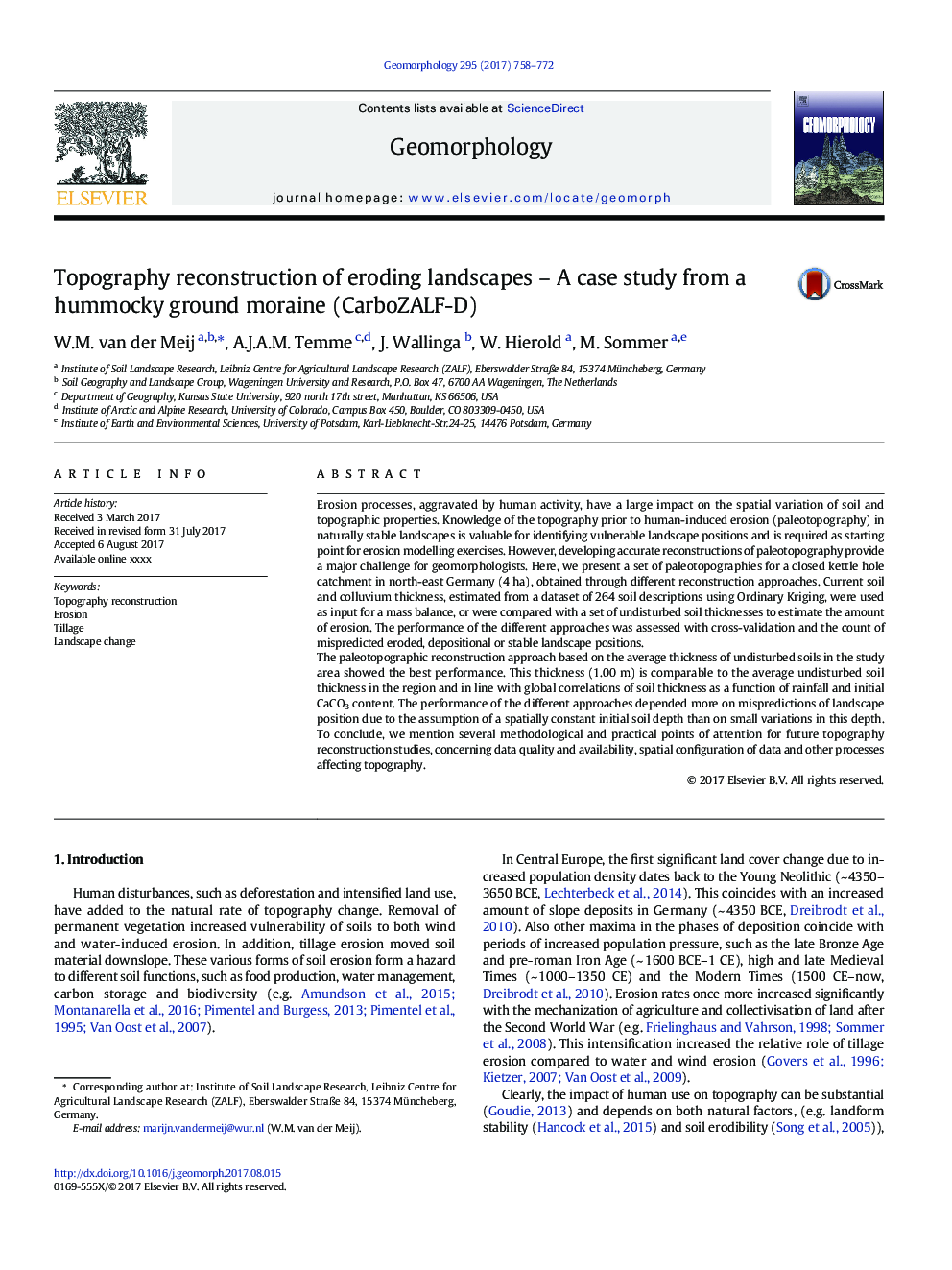| Article ID | Journal | Published Year | Pages | File Type |
|---|---|---|---|---|
| 5780791 | Geomorphology | 2017 | 15 Pages |
Abstract
The paleotopographic reconstruction approach based on the average thickness of undisturbed soils in the study area showed the best performance. This thickness (1.00Â m) is comparable to the average undisturbed soil thickness in the region and in line with global correlations of soil thickness as a function of rainfall and initial CaCO3 content. The performance of the different approaches depended more on mispredictions of landscape position due to the assumption of a spatially constant initial soil depth than on small variations in this depth. To conclude, we mention several methodological and practical points of attention for future topography reconstruction studies, concerning data quality and availability, spatial configuration of data and other processes affecting topography.
Keywords
Related Topics
Physical Sciences and Engineering
Earth and Planetary Sciences
Earth-Surface Processes
Authors
W.M. van der Meij, A.J.A.M. Temme, J. Wallinga, W. Hierold, M. Sommer,
